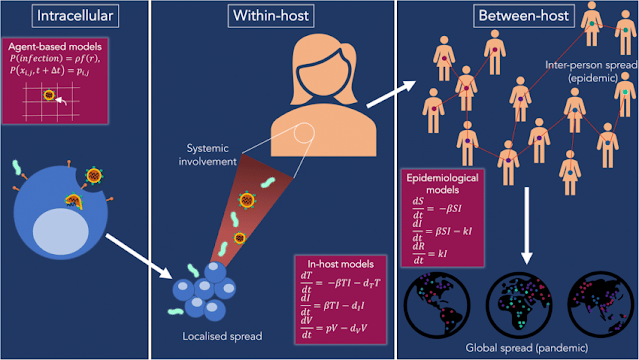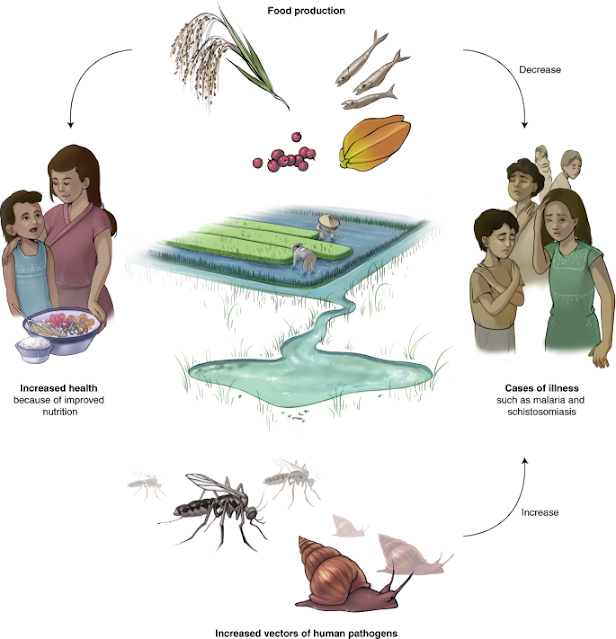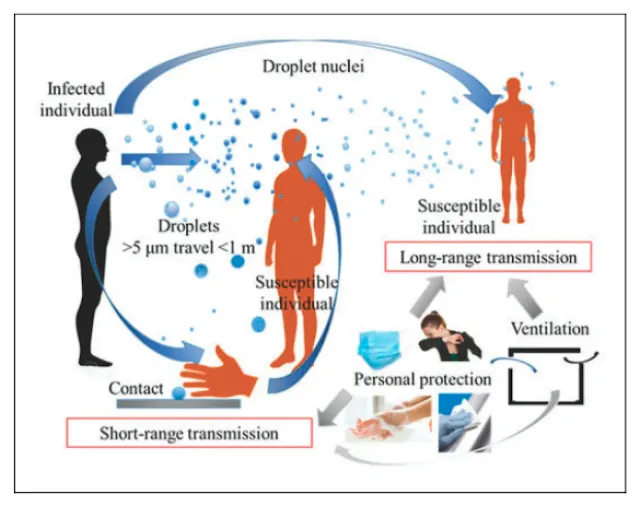INTRODUCTION: For an infectious disease to perpetuate there has to be a reservoir of microorganism from where the causative agent should be transmitted to a susceptible host either directly or through the agency of a vehicle or a vector.
SOURCE AND RESERVOIR: The source of infection is the person, animal, object or substance from which an infectious agent passes or disseminates to the host whereas a reservoir is defined as any person, animal, arthropod, plant, soil or substance (or combination of these) in which an infectious agent lives and multiplies. These can be of three types: 1) Humans 2) Animals 3) Non-living substances. Humans For infectious diseases of human beings, man is the most important reservoir. He may be a case or a carrier.
HUMAN CASE: A case may be having a clinical disease or subclinical infection which remains unmanifested or abortive. In latter, the disease agent may multiply in the host but does not manifest itself by signs and symptoms.
HUMAN CARRIERS: Some microorganisms do not get completely eliminated from the host after natural cycle of disease or after treatment. Such persons become carriers of the agents. A carrier therefore is defined as an infected person or animal that harbours a specific infectious agent in the absence of overt clinical signs and serves as a potential source of infection for others.
Though carriers are less infectious than cases, they carry greater epidemiological importance because of the prolonged duration for which they can silently excrete organisms. The carriers can be: 1) incubatory 2) convalescent or 3) healthy. Depending upon the duration of excretion of microorganisms they can be designated as: 1) temporary (acute) or 2) chronic carriers.
The incubatory and convalescent carriers are usually temporary whereas chronic carriers are otherwise healthy individuals. Chronic carrier state occurs in various diseases notably typhoid fever and hepatitis B. Hepatitis B
ANIMALS: Animals and birds can also pass on microorganisms to man. These may also manifest as case or exist as carriers. The diseases which are naturally transmissible between man and animals are called as zoonoses. These diseases are of great importance in countries where a close contact between man and animals is inevitable such as occurs in rural areas of India and Sub-Saharan Africa. Some of the important zoonotic infections are rabies; plague, brucellosis, leptospirosis, hydatidosis. Brucellosis
NON-LIVING SUBSTANCES: Soil and inanimate objects can also occur as reservoir of some microorganisms such as causative agents of infectious tetanus, anthrax, hookworm disease and mycetoma.
MODES OF TRANSMISSION: The microorganisms can be transmitted to human beings directly or indirectly. Direct transmission occurs through: 1) Contact with man, animal or inanimate objects. 2) Droplet infection 3) Breach of skin or mucous membrane 4) Transplacental and congenital.
The indirect transmission is possible by any of the following mechanisms; 1) Vehicles (water, food etc.). 2) Vectors (mechanical or biological). 3) Air (droplet or dust). 4) Fomites. 5) Unclean hands and fingers.
MECHANISM OF INFECTION: To produce infection in man a microbe has to gain entry into the host. The most frequent portals of entry are the respiratory tract, the gastrointestinal tract and breaks in the superficial mucous membranes and skin. From the portal of entry the parasite may spread directly through the tissues or may proceed via lymphatic channels to the blood stream, which distributes it widely and permits it to reach tissues particularly suitable for its multiplication. Nevertheless, for the perpetuation of a parasitic species a satisfactory portal of exit of the parasite from the host and an effective mechanism for transmission to new hosts are also of paramount importance.
DEVELOPMENT OF DISEASE: Once the microorganism overcomes the defences of the host, development of infectious disease follows a sequence of events.
Period of Incubation: This is the time interval between the actual infection and the appearance of first clinical feature.
Prodromal Period: This relatively short period follows incubation period in some diseases. It is characterised by mild early symptoms such as general aches and malaise.
Period of Illness: This is the acute phase of illness characterised by typical clinical features of the infectious disease.
Period of Decline: During this period the signs and symptoms subside. The fever decreases and the feeling of malaise diminishes
Period of Convalescence: The person regains strength during this period and body returns to pre-diseased state.
LOCAL OR GENERALISED INFECTIONS: An infection may be restricted to the point of entry (local) or may spread throughout the body (generalized).
Generalised Infections: Bacteraemia, septicaemia and pyaemia are some of the generalised infections which spread through blood:
Bacteraemia: Bacteraemia is defined as the circulation of bacteria in the blood. It may be transient or of long duration depending upon the duration for which bacteria are present in the blood. Transient bacteraemia is a frequent event which occurs even in healthy individuals while chewing, brushing of teeth and straining while passing stools. Bacteraemia of long duration occurs with pathogenic organisms such as Salmonella typhi and Brucella and is essential for the initiation of disease process.
Septicaemia: This is a condition in which bacteria circulate and multiply in the blood, form toxic products and cause high swinging type of fever. This can be due to both endotoxin as well as exotoxin producing organisms.
RELATED;
1. SEPTIC SHOCK
2. FEVERS
4. VIRULENCE OF MICROORGANISMS














No comments:
Post a Comment